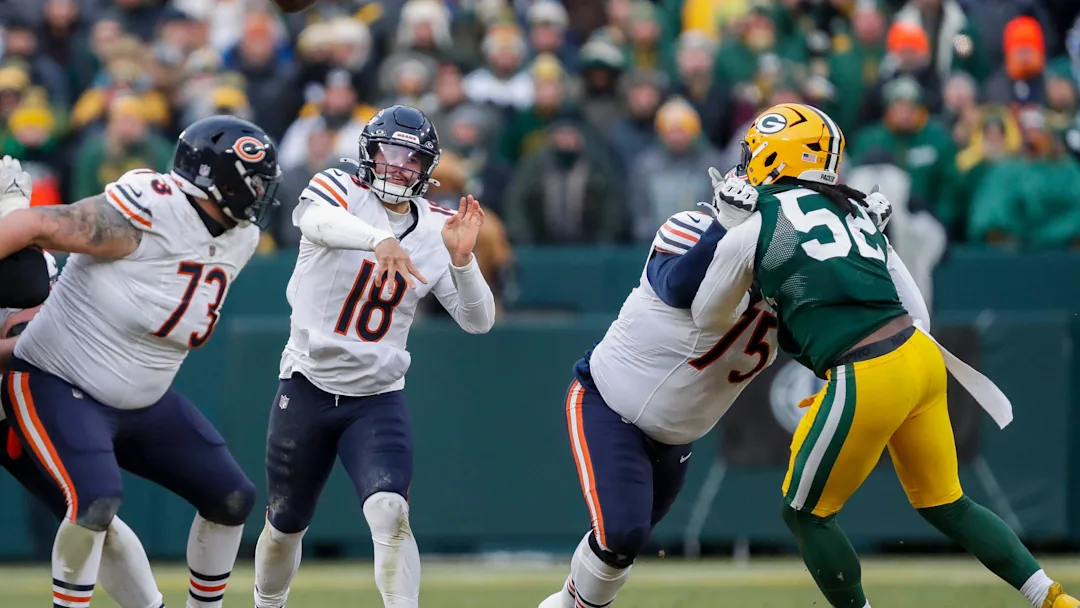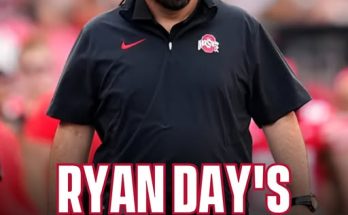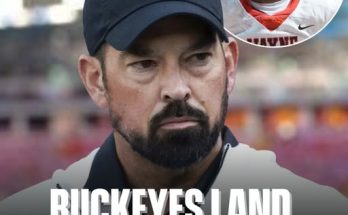In the lead-up to the 2025 NFL Draft, comparisons between quarterback prospects have become a major point of discussion, and one particularly intriguing comparison gaining momentum is that between Cam Ward and 2022 Heisman Trophy winner Caleb Williams. While Williams has long been seen as the presumptive No. 1 overall pick since his electric freshman year at Oklahoma and subsequent dominance at USC, some analysts are beginning to draw parallels between his game and that of Cam Ward, the dynamic quarterback from Washington State who later transferred to Miami. Ward’s rising stock has caught the attention of NFL scouts and draft analysts alike, and a closer look reveals why the two quarterbacks are being mentioned in the same breath as April approaches.
Cam Ward’s journey to this point has been far from conventional, which only adds to the intrigue surrounding his NFL projection. Coming out of high school in Texas, Ward was lightly recruited and ended up signing with Incarnate Word, an FCS program not typically known for producing NFL talent. It was there that Ward began turning heads, showcasing his elite arm talent and improvisational skills. In his first full season as a starter, he threw for over 4,600 yards and 47 touchdowns, earning the Jerry Rice Award as the top freshman in the FCS. His play was electric, full of big-time throws, dazzling scrambles, and clutch moments.
That performance led him to the transfer portal, where he landed at Washington State. The move to the Pac-12 gave Ward a chance to prove himself against Power Five competition, and though there were moments of inconsistency, he continued to show the traits that had scouts intrigued. With a unique blend of mobility, pocket awareness, and off-platform throwing ability, Ward reminded many of the way Caleb Williams plays the game—instinctive, fearless, and often magical when a play breaks down.
This similarity has not gone unnoticed. In a recent breakdown, one prominent NFL draft analyst noted that while Williams may have the pedigree and media spotlight, Ward possesses many of the same qualities that make Williams a top pick. Both quarterbacks excel outside of structure. When the initial play design breaks down, they thrive—dodging pass rushers, creating time with their legs, and firing off throws from multiple arm angles. Both have the kind of arm strength that allows them to make all the throws on the field, whether it’s a deep shot down the sideline or a laser between defenders across the middle.
What separates Ward, and what may ultimately affect his draft position, is polish and consistency. Caleb Williams has operated in high-powered offenses with elite skill talent, both at Oklahoma and USC. He’s been a known commodity since high school and has benefited from top-tier coaching. Ward’s path has been more rugged. He’s had to learn multiple systems, play with less talent around him, and carry a heavier load offensively. But some analysts argue that this makes Ward more battle-tested and perhaps more prepared for the adversity of the NFL.
One of the clearest examples of the comparison came during a televised scouting report on Ward. The analyst played film from both quarterbacks side by side—showcasing their escapability, their ability to extend plays, and their creative throws off-script. In one clip, Ward spun out of a sack, sprinted to his right, and threw a dart across his body to the sideline. In the adjacent clip, Williams did almost the exact same thing. The point was clear: Ward may not be as widely heralded, but he’s capable of making the same kind of plays.
Statistically, both players have impressive resumes. Williams’ final season at USC saw him throw for 3,633 yards, 30 touchdowns, and 5 interceptions while rushing for 11 scores. Ward, in his final collegiate season split between Washington State and Miami, amassed 3,442 passing yards, 28 touchdowns, and 6 interceptions with a completion percentage just over 66%. Their production, particularly in difficult circumstances, adds fuel to the comparison.
The physical tools are also quite similar. Williams is listed at 6’1″, 215 pounds, while Ward stands at 6’2″, 223 pounds. Both are compact, sturdy quarterbacks who can take hits and keep going. Each possesses above-average speed, with the ability to escape the pocket and gain chunk yards with their legs. And perhaps most importantly in today’s NFL, both are adept at throwing on the run and maintaining their vision downfield while under duress.
What Ward lacks in accolades compared to Williams, he makes up for in raw upside and untapped potential. While Williams has been carefully managed in quarterback-friendly schemes, Ward has often had to create his own offense, working behind inconsistent offensive lines and with unheralded playmakers. This has allowed scouts to see how he responds under pressure—an invaluable trait for NFL success.
Of course, the comparison isn’t without its detractors. Some scouts are quick to point out that Williams’ decision-making, leadership, and ball placement are more refined. He’s been in big games, faced top-ranked opponents, and consistently produced at a high level. Ward, while explosive, has moments where he struggles with accuracy and forces throws. Critics argue that while Ward has the traits, Williams has the total package.
Still, in a draft class that features several top quarterbacks, Ward’s name is beginning to rise up boards precisely because of this comparison. He may not be a first-overall candidate like Williams, but some believe he could be a steal for a team picking later in the first round or early in the second. His ceiling is high, and in the right system, with patient coaching and strong development, he could blossom into an NFL star.
This sentiment was echoed recently by a former NFL quarterback turned analyst, who said that in five years, Ward might be the one QB from this class that everyone looks back on and wonders how he wasn’t taken higher. He compared Ward’s trajectory to that of Josh Allen, another quarterback who came from a less traditional background and needed time to refine his game. Allen’s story is a reminder that physical tools and football instincts can eventually win out if a player is put in the right environment.
For Ward, the next few weeks are critical. His performance at the NFL Combine, private workouts, and interviews with teams will go a long way in shaping his draft fate. If he continues to impress in meetings and shows a strong understanding of pro-style concepts, there’s no reason he can’t be taken in the top half of the draft. Teams looking for a potential franchise quarterback who might not be ready day one but has all the tools to develop into a star will be taking a long look at Ward.
As for the Caleb Williams comparison, it serves as both a compliment and a challenge. It validates Ward’s talent but also sets a high bar. Williams is considered by many to be the most talented quarterback prospect since Patrick Mahomes. For Ward to be in the same conversation is a testament to how far he’s come. The difference between being compared to greatness and achieving it is significant, but Ward has shown he has the grit, talent, and work ethic to rise to that challenge.
Ultimately, as draft day nears, Cam Ward stands as one of the most intriguing players in this year’s class. His journey—from overlooked high school recruit to FCS sensation, to Pac-12 playmaker, to NFL hopeful—has been anything but ordinary. And now, as he prepares to take the next step in his football career, the comparisons to Caleb Williams may just be the beginning of his story. Whether he lives up to that lofty billing or forges his own path, one thing is clear: Cam Ward is a name everyone will be watching when the NFL Draft begins.



